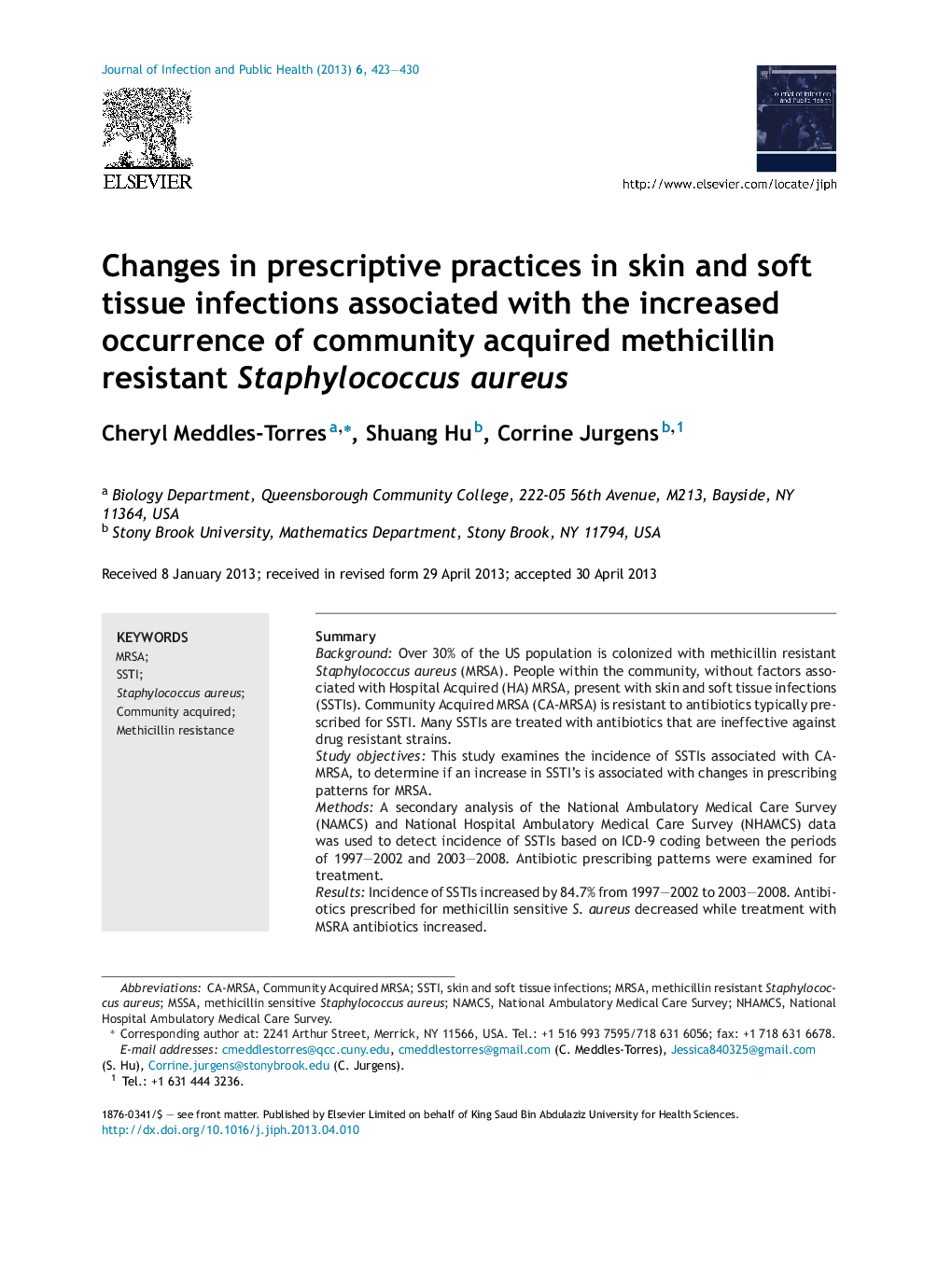| Article ID | Journal | Published Year | Pages | File Type |
|---|---|---|---|---|
| 3406309 | Journal of Infection and Public Health | 2013 | 8 Pages |
SummaryBackgroundOver 30% of the US population is colonized with methicillin resistant Staphylococcus aureus (MRSA). People within the community, without factors associated with Hospital Acquired (HA) MRSA, present with skin and soft tissue infections (SSTIs). Community Acquired MRSA (CA-MRSA) is resistant to antibiotics typically prescribed for SSTI. Many SSTIs are treated with antibiotics that are ineffective against drug resistant strains.Study objectivesThis study examines the incidence of SSTIs associated with CA-MRSA, to determine if an increase in SSTI's is associated with changes in prescribing patterns for MRSA.MethodsA secondary analysis of the National Ambulatory Medical Care Survey (NAMCS) and National Hospital Ambulatory Medical Care Survey (NHAMCS) data was used to detect incidence of SSTIs based on ICD-9 coding between the periods of 1997–2002 and 2003–2008. Antibiotic prescribing patterns were examined for treatment.ResultsIncidence of SSTIs increased by 84.7% from 1997–2002 to 2003–2008. Antibiotics prescribed for methicillin sensitive S. aureus decreased while treatment with MSRA antibiotics increased.ConclusionThere is an increased incidence of SSTI within the community, suggesting that CA-MRSA may be a contributing factor. Health care providers are recognizing the increased incidence of CAMRSA, and are treating SSTI with appropriate antibiotics.
